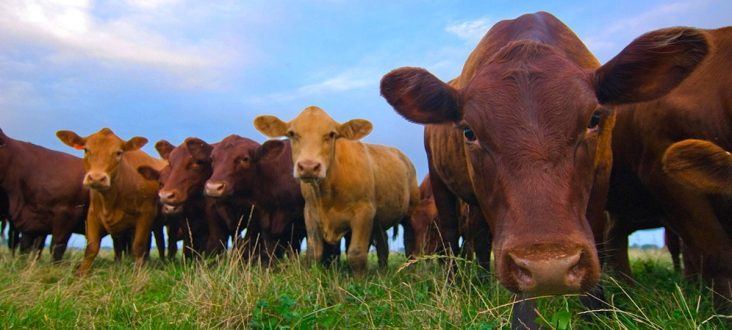Cattle markets improve on slightly lower feedlot inventories, trade with Taiwan
by September 24, 2019 7:08 pm 444 views

The U.S. cattle markets have settled down a bit since the Aug. 9 fire in the Finney County, Kansas Tyson Foods beef processing plant. The Sept. 1 feedlot inventories were 10.98 million head, down 1.3% from a year ago, according to the U.S. Department of Agriculture.
Derrell Peel, a livestock marketing analyst with Oklahoma State University, said the decrease in cattle on feed was the first time in 33 months inventories have declined. He said there were several regional differences in inventory among the largest feeding states. Peel reports Texas has inventories 101.9% higher than a year ago with a total of 2.73 million head. Kansas had a Sept. 1 feedlot inventory at 93% of the year-ago level with 2.34 million head. In Nebraska, the cattle-on-feed inventory was 2.16 million head, 101% of last year. Colorado has 0.93 million head of feedlot cattle in September. That was 103.3% of last year.
The September Cattle on Feed report highlights some regional differences in the current feedlot situation among the four largest feeding states. The September on-feed inventory in Texas was 101.9% of year-earlier levels at 2.73 million head. Kansas had a Sept. 1 feedlot inventory 93% of one year ago at 2.34 million head. Nebraska showed a Sept. 1 on-feed inventory of 2.16 million head, 101% of last year. Colorado had 0.93 million head of feedlot cattle as of Sept. 1, 103.3% of last year.
Peel said feedlot placements were down for the fourth consecutive month in August as was total placements the last six months. Peel said this accounts for most of the overall lower inventory.
Peel said the fire last month and a short-term disruption likely means feedlot inventories have not yet peaked this year. He said the calf crop last year and good forage conditions this year will likely push more cattle into the feedlots in the fourth quarter.
“The estimated 2019 calf crop is equal to 2018 levels meaning that plenty of new-crop calves will be marketed this fall with feeder supplies ample through 2020. It will likely be a few more months before we will see sustained year-over-year decreases in feedlot inventories,” Peel noted.
He said beef packers such as Tyson Foods are enjoying higher profits, despite some higher costs associated with having to transfer business away from the Kansas plant while repairs are being made.
Ben Bienvenue, an analyst with Stephens Inc., reported this week beef packer margins averaged about $448 per head, more than double the average of $202 a year ago. He said cutout values (the sum of all parts) were up 7.2% from a year ago. Hide and offal values (organ and variety meats) were up 3.2%. Lower live-cattle prices of nearly 8% also weighed in packer’s favor.
USDA reports cattle slaughter is up 0.8% from a year ago, and beef production is down 0.8% over the same period.
Cattle ranchers looking to sell are seeing an uptick in cash prices this week, after stalling out for the past month or so. Cash prices are about $101 per hundredweight. Cattle futures are also were up this week for October live cattle rebounding since the market disruption from last month.
Open trade for U.S. beef is one area that benefits the industry up and down the supply chain. With South Korea being a major market for U.S. beef, trade officials are continually looking for additional markets to ensure supplies do not build up and prices remain high.
Arkansas Secretary of State John Thurston and the Arkansas Cattleman’s Association are hosting a delegation from the Republic of China (Taiwan) on Sept. 24 and 25 to promote the export of Arkansas beef to Taiwan.
“This is an important partnership and a great opportunity for Arkansas agriculture,” said Secretary Thurston. “Arkansas already exports tens of millions of dollars worth of goods to Taiwan. This has the potential to really benefit our ranchers.”
Taiwan is the sixth-largest export market for American beef, and more than one-quarter of Taiwan’s agricultural imports come from the U.S. consumption of American beef in Taiwan rose 76% from 2014 to 2018.
Trade officials will sign a letter of intent to conduct business together at a public ceremony at 1:30 p.m. on Wednesday, Sept. 25, at the Old Supreme Court Room of the State Capitol.
